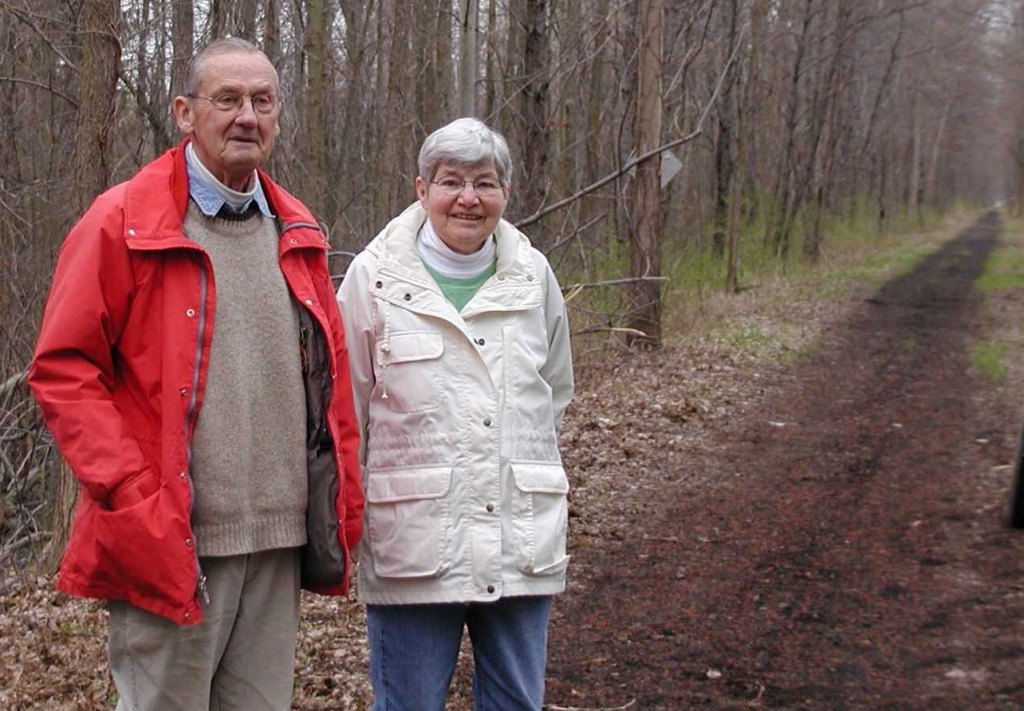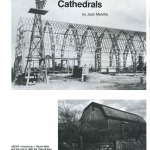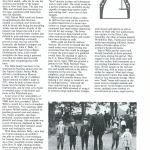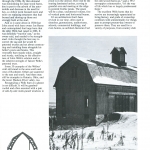Remembering Jean Melville
Written by Bob Melville
Mom’s interest in Wells barns began in the early 1970’s while she was boarding her horse “Giant” in the Letson Wells barn on River Road. On her regular visits to ride Giant she took notice the barn’s spacious interior and unique framing. Also Mom’s artist’s eye found the barn’s gently curving trusses esthetically pleasing.
Her curiosity piqued, Mom began a casual search into the barn’s history and its builders, and whether there were other similar barns in and around Wheatland.
When Mom mentioned her interest to her good friends Larry and Martha Stokoe, Larry took my Mom and Dad to the Stokoe Wells barn on Bowerman Road. Also Mom connected with Wheatland Historian Florence Field who herself owns a Wells barn (the Cox barn on South Road). This in turn led her to visit the Estes and Whitman barns among others. Mom was now hooked.
Her interest had Mom visiting various local libraries, the Rundel Library downtown, town historians, and more to search building records in order to determine the locations and ownership history of other Wells barns. Also, Dad had retired by the late 1970’s. Between summers at the cottage in Canada and winters spent skiing, Dad indulged Mom by driving her around Western New York to visit Wells barns, to speak with their owners and to take photos. Mom took many notes and photos documenting her visits and interviews.
As her research broadened she made contact with Daniel Fink who was researching and writing his future book “Barns of the Genesee Country, 1790-1915”. In the finished book Mom’s material was incorporated into the book’s chapter on Wells barns.
By now Mom wished for Wells barn of her own. Dad however was not as enthusiastic (he already had a small barn containing his wood shop – “one barn was enough” he declared). However, he did put his cabinet makers’ skills to use and constructed a scale model of a Wells barn truss as a gift to Mom. He used patent drawings and dimensions obtained during field inspections of several Wells barns to lay out the model. The finished model hung in my parents’ living room for many years. It is now displayed proudly in my family room.
An Interview with Bob Pratt
Written by Katie Andres
“I was just a kid just riding my bicycle still in school. I’d mow lawns and take care of things and work in the barns. Sometimes we’d go to lumber yards and at that time, have to unload railroad cars. After I got a work permit, I could go out on the jobs with him. He put me to work.”
According to Bob, working on the barns entailed shingling at times as well as tightening up the existing framework, including the siding and the doors. While each barn was built just a little bit differently, depending on which family member was at the helm during construction, the Wells Contractors were very particular when it came to nailing down the details:
“Whether my great uncle built one or whether my grandfather was in charge of one, or great-grandfather – each one was a little different. There might be an extra block of wood nailed in here or there. One thing about them…they were fussy nailers. My great uncle, he was particularly fussy about using pairs of nails for most everything. And then he told me his father was worse than he was! Never drive a nail in straight. You drive a pair of them so they work one against the other.”
Recalling the back-and-forth negotiations that frequently took place between his great-uncle and materials suppliers, Bob provided a great deal of insight into the communication that was involved before transactions were finalized and building materials were acquired:
“He used commercial lumber that was available in the area at the time to do away with the big posts and the big beams. He could make compound pieces if he needed to – by nailing them together. Then lumber was being milled in better saw mills and was milled better in that area. When he would write a lumber company asking for quotes, they’d write back and say, “Well, we’ll give you some random lengths and stuff and this and that,” and he’d write back and tell them, ”Nah, they’re not suitable” and so they’d write back. Finally they’d settle on a price and it would be shipped by railroad car to the nearest railhead – which it could come in a box car or coal car or a flat car or anything – it just…and then hire a teamster to get it to the barn site. It was quite an achievement, really, back in the day.”
Recognizing this achievement, Bob’s late wife Judy grew interested in her husband’s family heritage and began researching the Wells barns during the late 1990s. Her efforts started small, but quickly grew in scope. Assisted by Catherine Gilbert, Florence Fields, Jean Melville and others, Judy Pratt began documenting the Wells barns. She tirelessly contacted barn owners, took detailed notes by hand, and snapped pictures every chance she got. Bob credits Judy as the driving force behind the book about the Wells barns that they self-published in 2004: “I didn’t have much to do with it other than take a ride once in a while. Some of the people I knew and then she found others and talked to them and found out that they were accommodating with her.” Together, they financed a run of several hundred Wells barn books, charging just enough for them to recoup their publishing expenses.
During our interview, I expressed my sympathy and told Bob that I was sorry I didn’t have the chance to meet his late wife Judy in person. I was saddened to learn that she passed away three years before my interest in the Wells barns was fueled by finding a copy of their book on the shelf at the Scottsville Free Library, yet I know in my heart that my research forays have unquestionably been guided by her previous efforts and her expertise.










